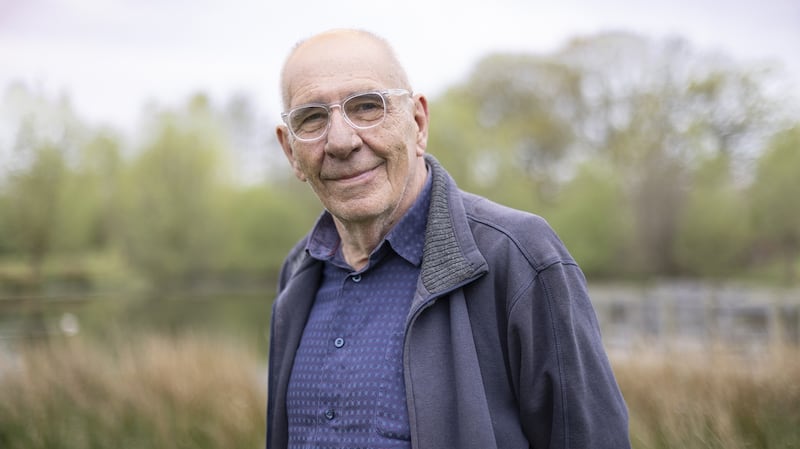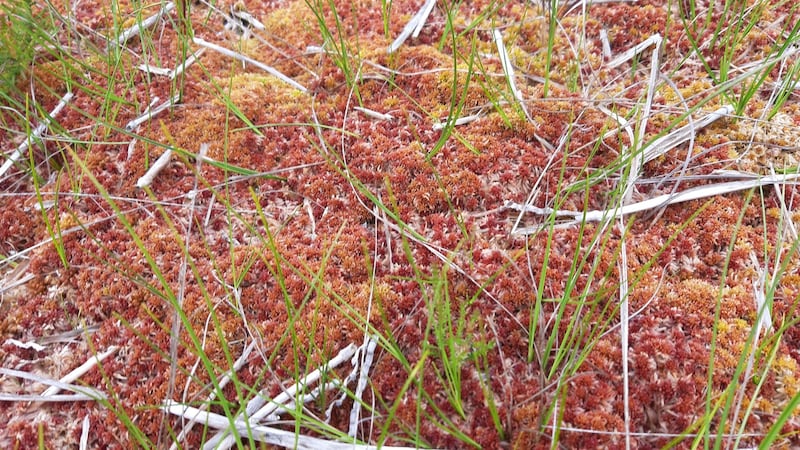Dutch ecology professor Matthijs Schouten has a unique understanding of Irish bogs and the transformational changes in how they have come to be viewed, understood and used in the past few decades.
"Bogs were always associated with poverty in Ireland and as land that was unsuitable for any use other than turf-cutting. They were not really appreciated," says Schouten, who first came to Ireland to research bog plants in the 1970s. He is now adjunct professor of ecology at University College Cork and emeritus professor of plant ecology and nature conservation at Wageningen University in the Netherlands.
Conscious that back home in the Netherlands, almost all boglands had been developed, the young researcher realised that Ireland was going down the same route as the Netherlands – with no thoughts for conservation of these wonderful habitats.
"In the 1980s Ireland was one of the last countries in western Europe to still have intact bogs, some of which hadn't been cut or severely damaged," says Schouten.
So in 1983, along with a group of friends, Schouten set up the Dutch Foundation for the Conservation of Irish Bogs. Between 1983 and 1987, that organisation raised enough money to purchase three peatlands – Scragh bog in Co Westmeath, Cummeragh river bog in Co Kerry and Cloghar na gCon in Co Galway. At the same time, the Irish Peatland Conservation Council was founded to campaign for and support initiatives on bog conservation throughout Ireland.

Some years later the Dutch government handed back these bogs as a gift to the Irish people and the Irish government pledged to conserve a further 50,000 hectares of peatlands in Ireland. Schouten gave an online talk on Nature as a Partner: Changing Attitudes to Nature and Landscape at the recent Burren in Bloom festival in Co Clare.
In advance of his talk, he says he is very impressed by the changes that have taken place in the perceptions of peatlands in Ireland. "People now view bogs as an intrinsic part of the Irish landscape. They have become part of the Irish identity in a positive way," he says. We discuss projects such as the community-led Abbeyleix Bog project in Laois, Clara Bog and Lough Boora Discovery Park in Co Offaly.
Turf-cutting controversy
Schouten acknowledges some of these changes were brought about through State-led bog conservation initiatives and international obligations such as the EU habitats directive, which designated special areas of conservation (SACs) on Irish bogs.
Schouten is also aware of the ongoing controversy about turf-cutting and turbary rights (the right to cut turf on your own land and on commonage areas) as Minister for the Environment Eamon Ryan seeks to ban the commercial sale of turf as part of the countrywide prohibition of the burning of all smoky fuels (including wet wood and coal) to improve air quality and reduce carbon emissions.
“Turbary rights are also part of Irish country heritage [and their withdrawal] infringes on people’s sense of personal rights. I used to say as an ecologist that turbary rights should not continue on SACs but that they should be allowed on bogs which had been drained or otherwise damaged,” he says.
But, now in light of the twin biodiversity and climate crises, Schouten has changed his view. “Conserving bogs from a biodiversity point of view is very important. Bogs are quite extraordinary ecological systems with highly specific flora and fauna. If you consider that in the Netherlands, we have spent €30 million trying to restore and regenerate 10,000 hectares of bogs over the last 50 years and we now have 20-30 hectares of living bog again, that makes Irish bogs extraordinarily valuable.”
In 2020 the National Parks & Wildlife Service (NPWS) suggested it would cost €1 billion to restore all Irish peatlands (including blanket bog and fens) designated for their conservation importance.
On carbon sequestration and carbon storage aspects of bog, Prof Schouten says that while forests sequester carbon three times more efficiently than bogs, bogs store carbon to a much greater extent.
“Peatlands cover about 3 per cent of the Earth’s surface yet they store at least twice as much carbon as all the standing forests on the Earth,” he says. Of course, drained bogs – similar to tundra where permafrost melts – emit carbon.
Schouten says blanket bogs – which are often used for forestry and grazing – can be rehabilitated more quickly that raised bogs, including those that were partially cut away for peat harvesting. “Blanket bogs are less dependent on peat moss vegetation. They just need a wet surface to be restored whereas raised bogs are more hydrologically complex systems which depend on living peat moss vegetation at the surface.”
Climate change
In an interesting turn of events, Schouten now has a PhD student studying the impact of climate change on the same Irish bogs he first studied 40 years ago.
Joining our conversation on video, the chief executive of the Irish Peatlands Conservation Council Nuala Madigan says, "We want our bogs to be our climate champions. One ongoing challenge in Ireland is to reconfigure National Heritage Areas [NHAs are areas which contain plant and animal species whose habitats need protection] so that proposed NHAs are designated [to ensure] development can't happen on these sites."
It is estimated Ireland holds 60 per cent of Europe’s remaining active raised bogs. But from our original 310,000 hectares of active raised bog, the NPWS estimated in 2019 that the entire raised bog network comprises 11,000 hectares, of which 1,195 hectares are active raised bog.
Yet although the cutting of peat on Ireland's EU protected raised bogs was banned in 2011, data released to the Noteworthy investigative reporter Niall Sargent found that peat was extracted from more than 280 plots in 2021.
Speaking about the current political controversy around cutting and burning turf for home heating, Madigan adds: “I think the argument around burning peat to heat our homes stood in the 1940s but not in 2022. I don’t think there are any homes in Ireland solely dependent on heating their homes with turf. As Ireland transitions to a net-zero, low-carbon economy having already declared a biodiversity and climate emergency, I think the current political debate around the right to extract and burn peat is causing confusion in the community.”

Madigan believes there is a new community involvement with peatland restoration. "People have a sense of belonging with these projects in which they see themselves as the custodians of bogs," says Madigan, citing Killyconny Bog (also known as the Cloghbally Bog and Mullagh Bog), a 191-hectare SAC raised bog restoration project in Co Cavan; and Girley Bog in Co Meath as examples.
She also sees great potential in promoting the amenity value of bogs through their connection with other nearby walking routes such as the Barrow Blueway.
Bog facts
Peat bogs account for almost 14 per cent of the total land cover in Ireland, according to the Corine Land Cover 2018 data set. Almost 70 per cent of peat bogs are in Donegal, Galway, Kerry and Mayo.
In 2018, agricultural practices – mainly grazed commonage areas – used 70 per cent of peat bog while almost 5 per cent was used for peat production, according to collated data from Coillte, Bord na Móna, the Forest Service and the Department of Agriculture, Forestry and the Marine.
Natural peatlands and healthlands accounted for another 22 per cent, with the remaining 2-3 per cent used for forestry.







